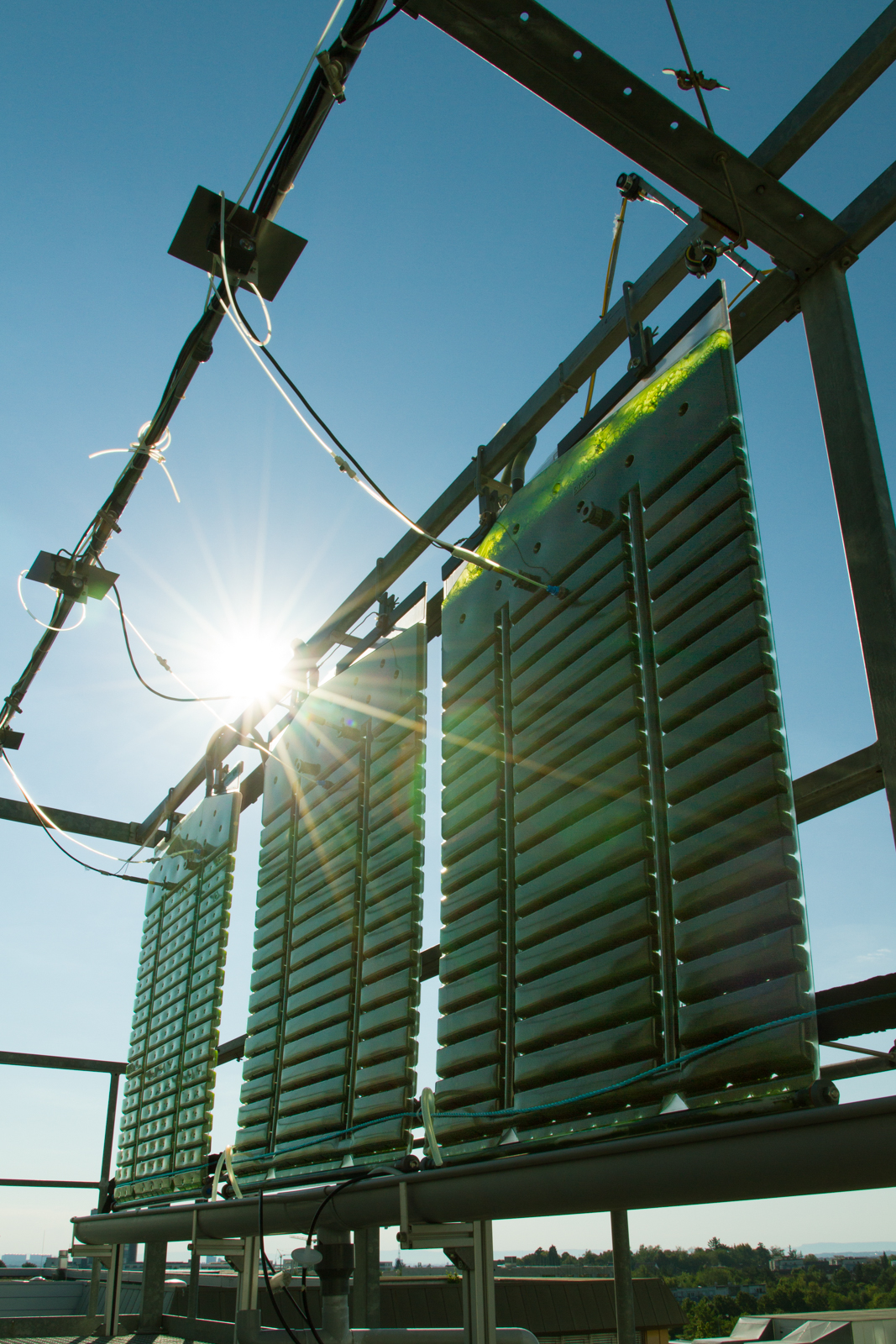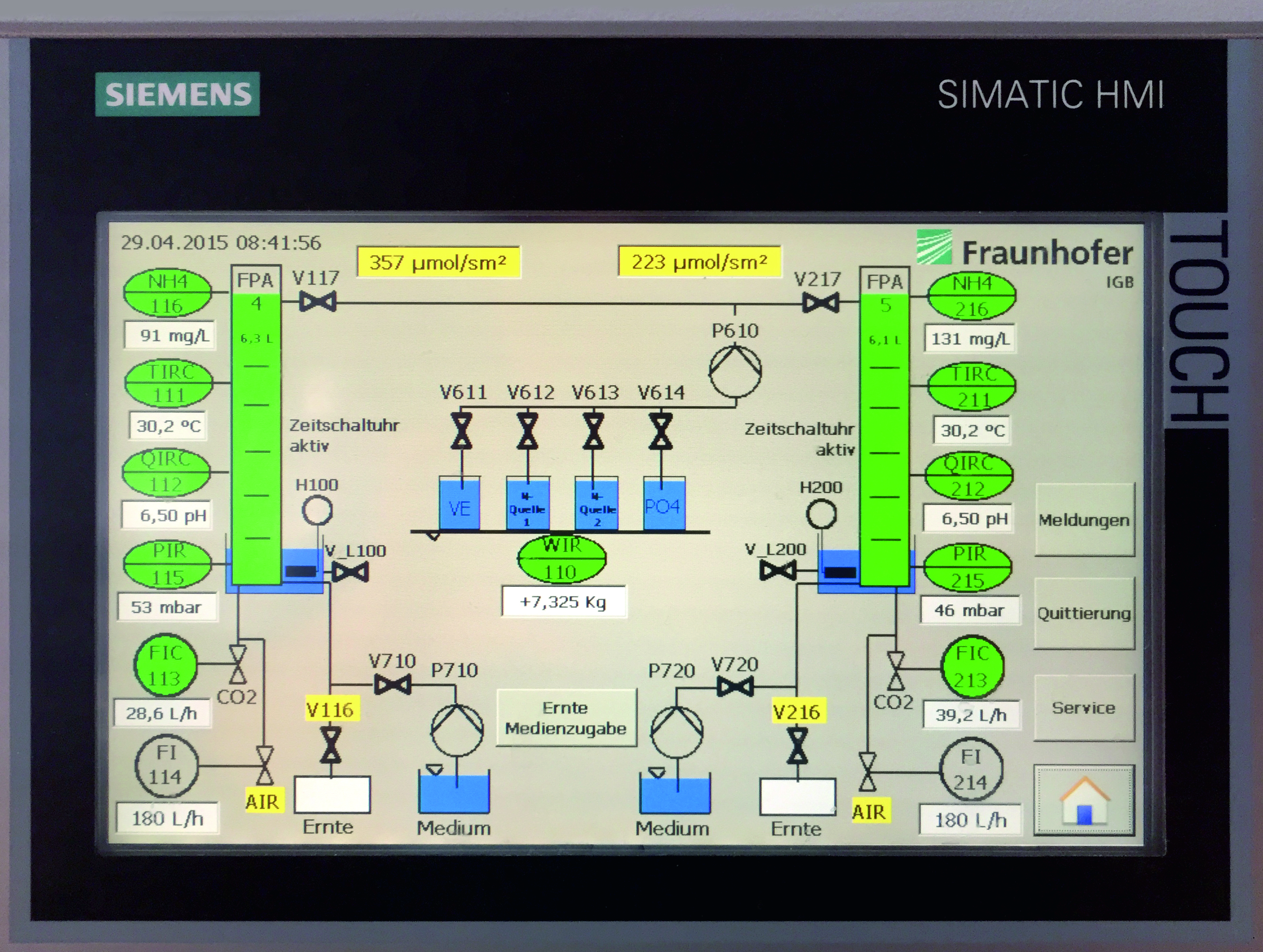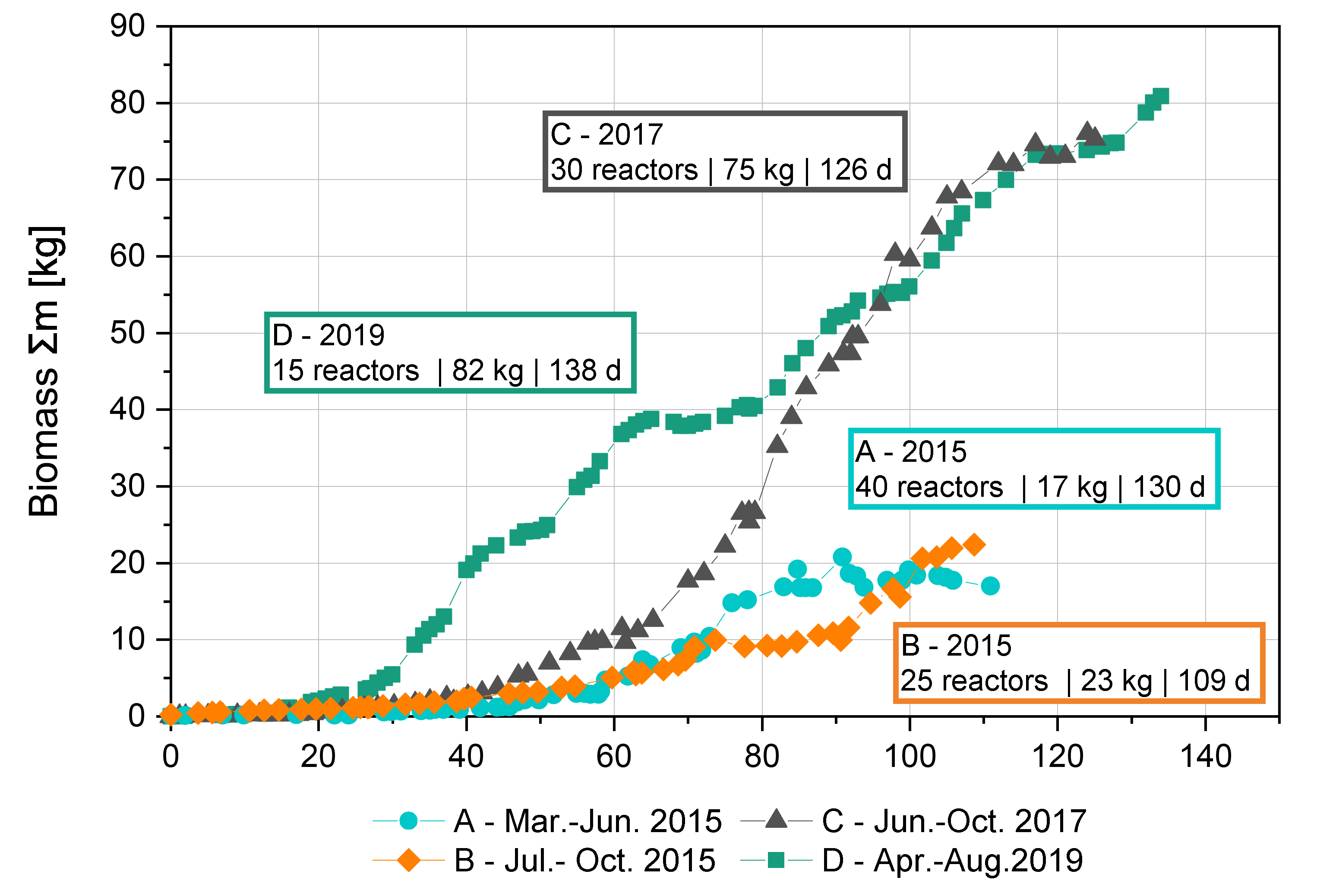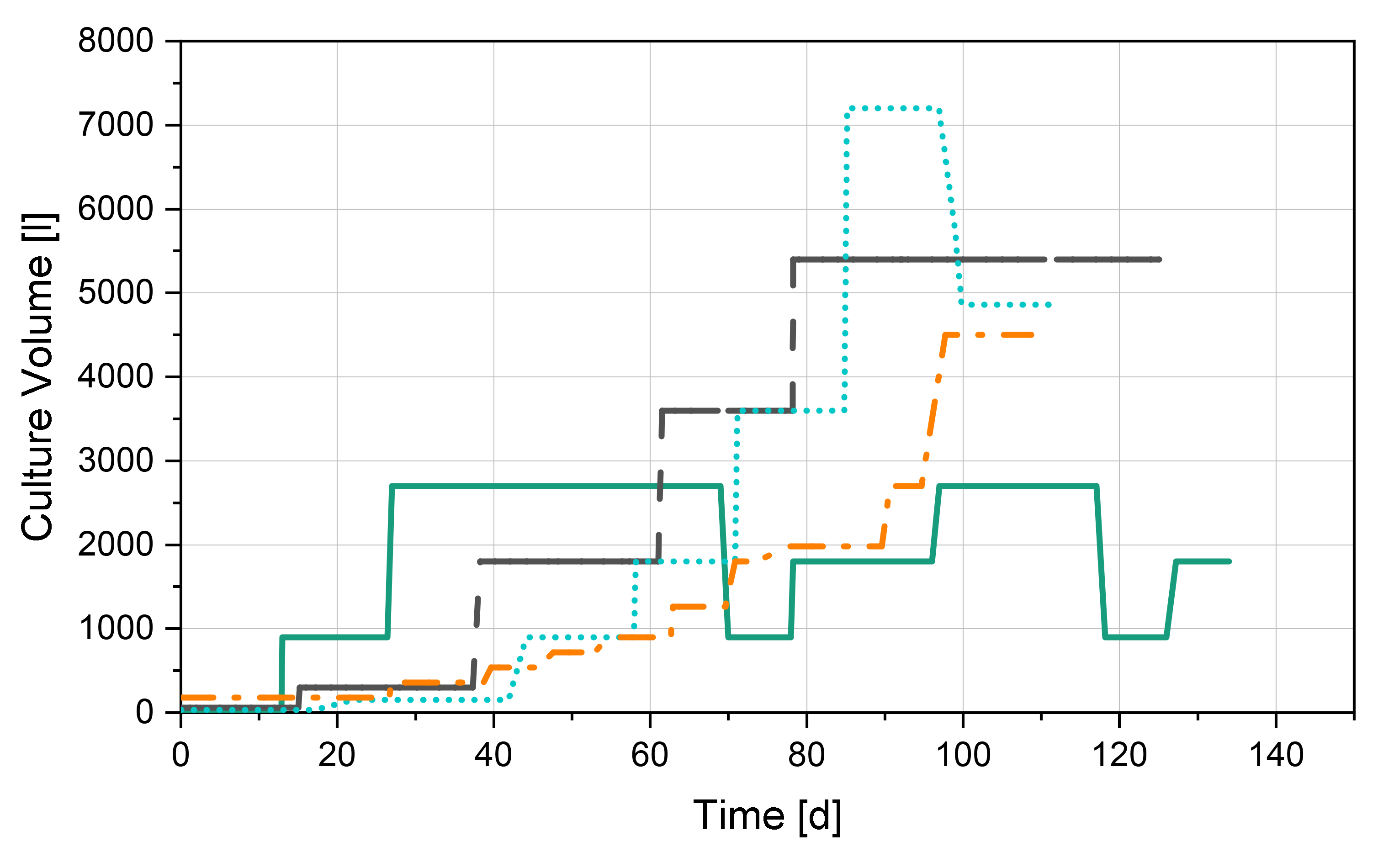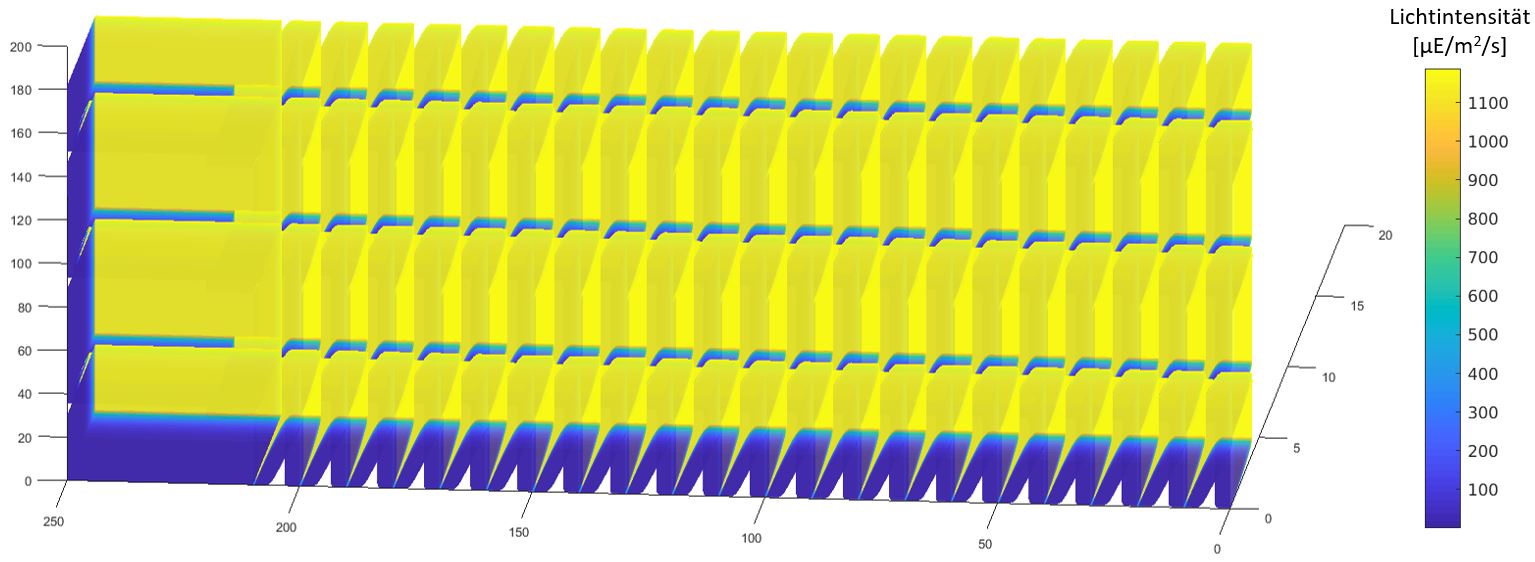Flat panel airlift photobioreactor
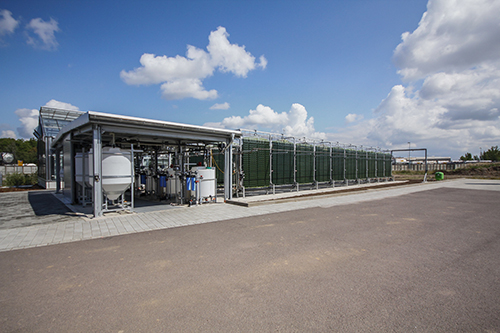
The most important process parameter in the mass cultivation of microalgae in photobioreactors is the light intensity, which has an impact on every algal cell in the photobioreactor volume. This determines the biomass productivity and thus the growth rate and cell concentration of the algae in the reactor. To achieve high cell concentrations, the light availability for every individual cell in the photobioreactor has to be increased.
The photobioreactor system developed and patented (Patent number WO 00926833.5; EP 1326959) at the Fraunhofer IGB and scaled-up by the Fraunhofer spin-off Subitec GmbH takes these parameters into account. Airlift-driven intermixing combined with static mixers offers efficient distribution of light with a low energy input for intermixing and low shear forces taking effect on the algal cells. Due to the static mixers, uprising gas bubbles induce definite vortices in the interconnected reactor compartments. In these definite vortices algal cells are transported at short intervals to the reactor surface to intercept high light intensities and then transported back to the dark. Sufficient CO2 and O2 mass transfer for unlimited growth is ensured by the combination of the airlift-driven principle and static mixers. The flat panel airlift (FPA) reactor is well-suited for small-scale and large-scale production of microalgae. The reactor itself is inexpensively made from two deep-drawn plastic sheets including static mixers, manufactured by twin-sheet technology.
In a scale-up process the volume of the FPA reactor was increased from 5 liters lab scale to 30 liters and finally to 180 liters by Subitec GmbH. The scale-up step to a pilot plant consists of linking several reactor modules (each 180 liters).
 Fraunhofer Institute for Interfacial Engineering and Biotechnology IGB
Fraunhofer Institute for Interfacial Engineering and Biotechnology IGB